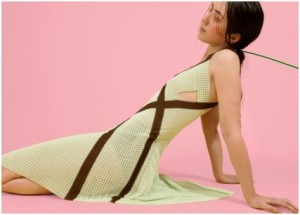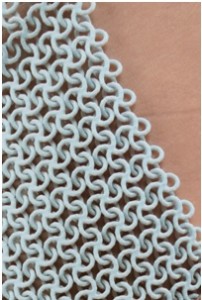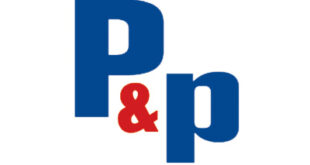
The University of Hertfordshire has developed a revolutionary new prototype collection of wearable 3D printed garments.
The MODECLIX project has successfully developed products that are uniquely customisable and wearable.
Shaun Borstrock, associate dean for business and innovation, is the architect behind the project, which has been created in collaboration with renowned 3D specialist and designer Mark Bloomfield.
One of the biggest challenges with 3D printing technology is how to make it wearable. This project has addressed that challenge by printing textiles that are flexible with movement and mimic traditional cloth.
The complex design process involved in making these revolutionary garments represents a huge breakthrough for garment technology and 3D printing. The project focuses on an interpretation of weave, stitch and knit. The initial prototypes are 3D printed as pieces of textile that have enough movement to ensure that they are fluid and represent a fabric that can be used to make a garment.
The collection was produced on an industrial 3D printer, the EOS Formiga. The process called selective laser sintering and involves a white nylon powder being fused together one layer at a time with a laser. The printing time varies depending on complexity, printing enough components to complete a dress could take 62 hours. The printed components are then cleaned, vibro finished and hand dyed. The garments are constructed using traditional dress making techniques using a dressmaking stand to drape and form the pieces, linking panels together to create the final form.
Featuring eight dresses and two headpieces this collection is the first to make 3D concepts wearable and can be customised to any size and shape either before printing or after, by adjusting the intricate links to fit by hand. They can also be dyed in an endless spectrum of thousands of colours.

Dr Borstrock said: “Previous 3D printed designs have been mostly conceptual pieces that are solid, with little or no movement. We have strived to create stylish 3D printed garments that have sufficient movement to ensure they are fluid, eye-catching and comfortable to wear. These prototypes are made, dyed and finished by hand and our aim now is to produce them for a wider market.
“It will only be a matter of time before we see 3D collections on the high street and 3D printing technology in stores as part of everyday life. We’re pleased to be part of the movement that is exploring how this might become a reality.”
Mr Bloomfield added: “I’ve spent the last 25 years exploring how technology and 3D printing can enhance production techniques for jewellery and accessories, and this has been a fantastic opportunity to take this research even further. There is a huge amount of potential to develop complex construction techniques that defy traditional pattern cutting and create garments that are multi-functional, customisable and wearable.”
 Printwear & Promotion The Total Promotional Package
Printwear & Promotion The Total Promotional Package




